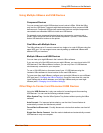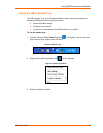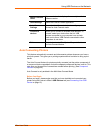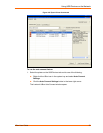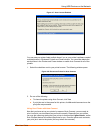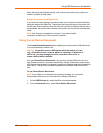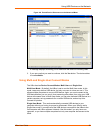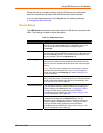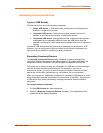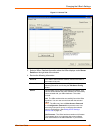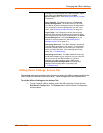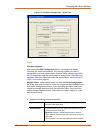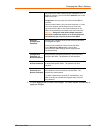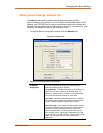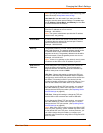
Using USB Devices on the Network
Separating Compound Devices
Types of USB Devices
USB devices fall into one of the following categories:
Single USB device: A USB device that contains only one component (for
example, a single button mouse).
Composite USB device: A device that provides multiple functions but
appears as one device (for example, a multifunction printer).
Compound USB device: A device that provides multiple functions that are
tied together by an embedded USB hub inside the USB device itself (for
example, a printer with a card reader and a keyboard with a port to connect a
mouse).
Compound USB devices work the same way as when they are connected to a PC.
However, you can configure the UBox to connect to only certain components of a
compound device instead of connecting to every component.
Separating Compound Devices
The Separate Compound Devices option (disabled by default) changes how
compound USB devices appear in the UBox software. If this option is enabled, the
components inside a compound USB device appear as separate USB devices.
This allows you to connect to only one component of a USB device without having to
connect the other components of that device. For example, if you have a
multifunction printer, you may only want to connect the printer component of that
device and not the other components (e.g., the scanner, fax, or card reader).
When you connect to a “separated” component of a compound USB device, all of the
other components become unavailable to the other users of the UBox. This prevents
a USB device from getting confused by accepting commands from two different
computers.
To separate compound devices:
1. On the USB Devices tab, select the device.
2. Select the Separate Compound Devices checkbox. The components of the
compound device display separately.
UBox User Guide 28



